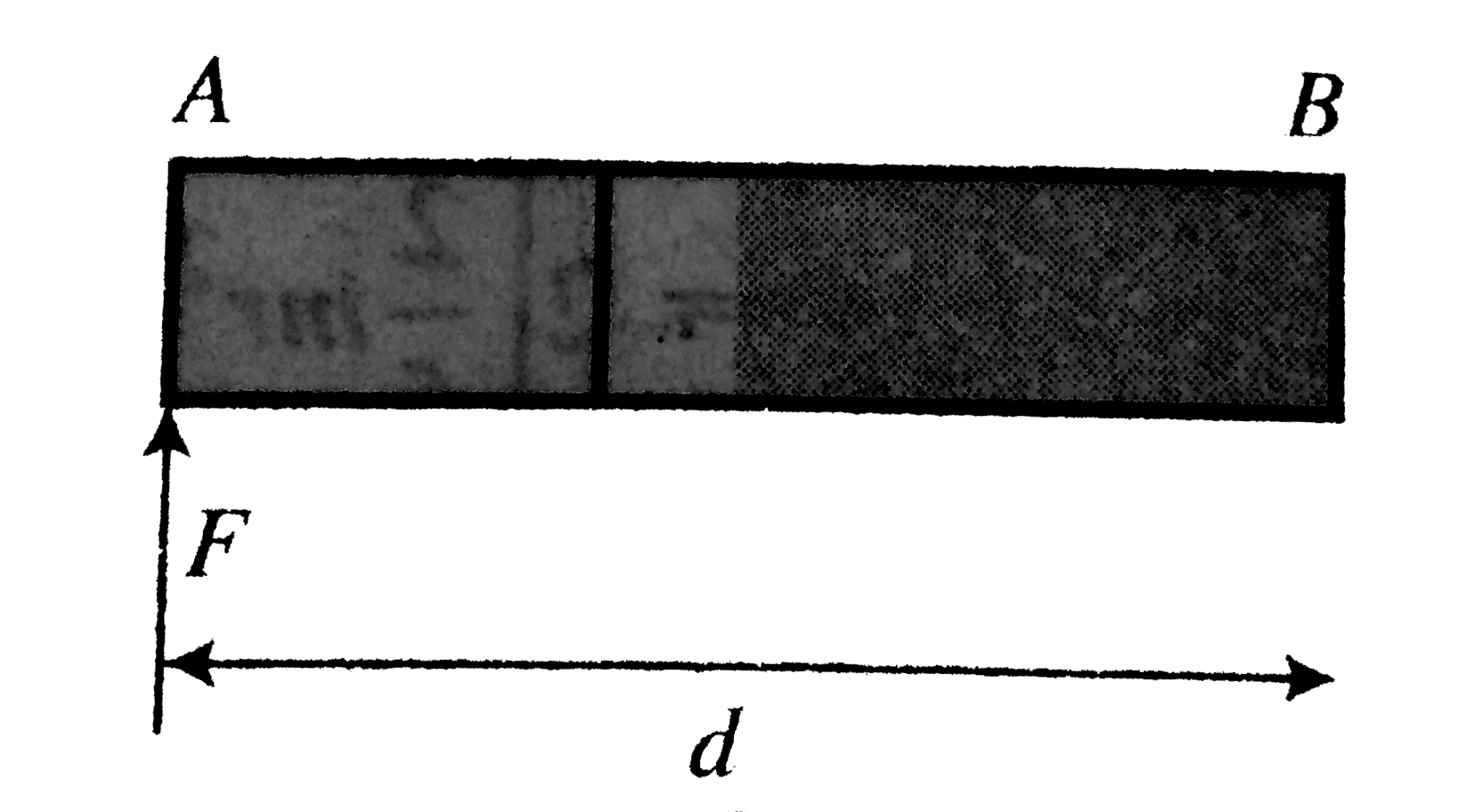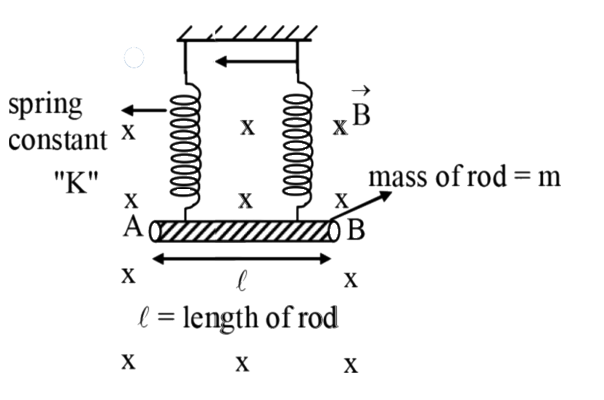The density of a rod continuously increases from A to B. It is easier to set it into rotation by
clamping the rod at A and applying a force F at B, perpendicular to the rod
clamping the rod at B and applying a force F at A, perpendicular to the rod
clamping the rod at mid point of AB and applying a force F at A, perpendicular to the rod
clamping the rod at mid-point of AB and applying force F at B, perpendicular to the rod.
The correct Answer is:B
b. τ=Iα,α=τl
a. τ=Fd,I large
α minimum
b. τ=Fd,I minimum,
α maximum
c. τ=Fd2
τ=Fd2

Topper's Solved these Questions
- RIGID BODY DYNAMICS 1BOOK - CENGAGE PHYSICSCHAPTER - RIGID BODY DYNAMICS 1EXERCISE - Multiple Correct
9 Videos
- RIGID BODY DYNAMICS 1BOOK - CENGAGE PHYSICSCHAPTER - RIGID BODY DYNAMICS 1EXERCISE - Linked Comprehension
28 Videos
- RIGID BODY DYNAMICS 1BOOK - CENGAGE PHYSICSCHAPTER - RIGID BODY DYNAMICS 1EXERCISE - Subjective
13 Videos
- PROPERTIES OF SOLIDS AND FLUIDSBOOK - CENGAGE PHYSICSCHAPTER - PROPERTIES OF SOLIDS AND FLUIDSEXERCISE - INTEGER_TYPE
2 Videos
- RIGID BODY DYNAMICS 2BOOK - CENGAGE PHYSICSCHAPTER - RIGID BODY DYNAMICS 2EXERCISE - Interger
2 Videos
Similar Questions
The density of a rod AB continuously increases from A to B. Is it easier to set it in rotatio by clamping ilt at A and applying a perpendicular force at B or by clamping it at B and applying the force at A?
View SolutionThe density of a rod AB continuously increases from A to B. Is it easier to set it in rotatio by clamping ilt at A and applying a perpendicular force at B or by clamping it at B and applying the force at A?
View Solution
Knowledge Check
in which fo the following cases the centre of mass of a rod is certainly not at its centre?
(A) The density continuously increases from left ot right
(B) The density continuously decreases from left to right
(C) The density decreases from left to right up to the centre and then increases
(D) The density increases from left to right up to the centre and then decreases
Select correct alternative.AOnly (A)BOnly (A) and (B)COnly (B)DOnly (C) and (D)The density of a rod AB increases linearly from A to B its midpoint is O and its centre of mass is at C. four axes pass through A, B, O and C, all perpendicular to the length of the rod. The moment of inertial of the rod about these axes are IA,IB,IO and IC respectively.
AIA>IBBIC<IBCIO>ICDAll of theseAs the density of a series of liquids increases, the upthrust on the iron rod submerged
AincreasesBdecreasesCremains constantDnothing can be said
The density of alkali metals increases from Li to Cs.
View Solutionin which fo the following cases the centre of mass of a rod is certainly not at its centre?
(A) The density continuously increases from left ot right
(B) The density continuously decreases from left to right
(C) The density decreases from left to right up to the centre and then increases
(D) The density increases from left to right up to the centre and then decreases
Select correct alternative.
View SolutionThe density of a rod AB increases linearly from A to B its midpoint is O and its centre of mass is at C. four axes pass through A, B, O and C, all perpendicular to the length of the rod. The moment of inertial of the rod about these axes are IA,IB,IO and IC respectively.
View SolutionIf the extension in both the springs increases from x to x0 on flowing current i in the rod from B to A then, the value of magnetic field will be -

View SolutionIf the extension in both the springs increases from x to x0 on flowing current I in the rod from B to A then, the value of magnetic field will be -

View Solution
